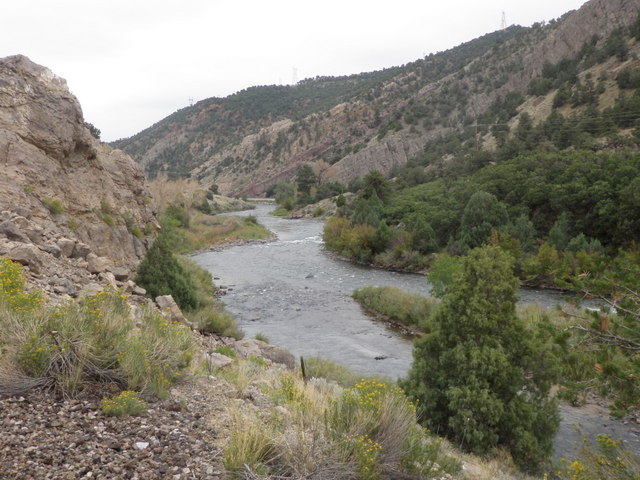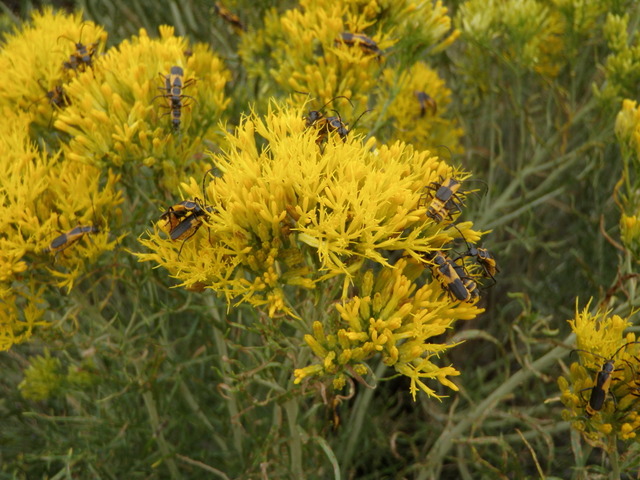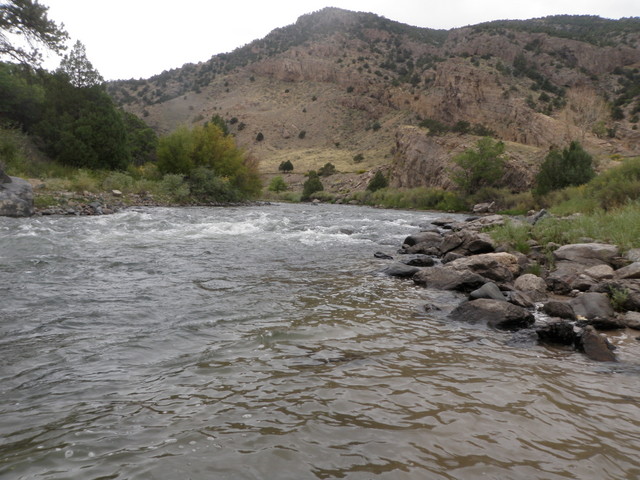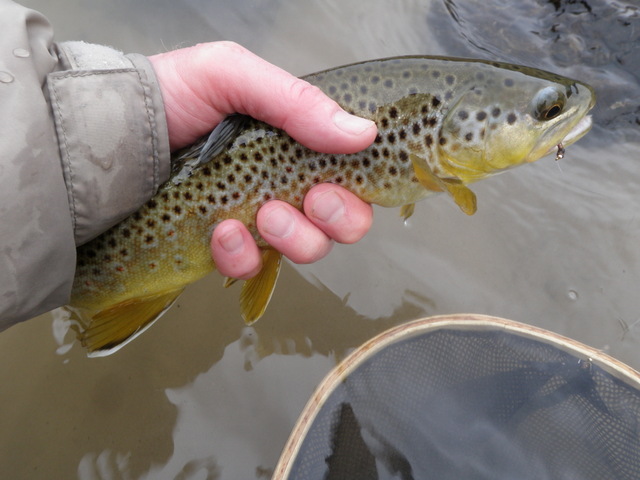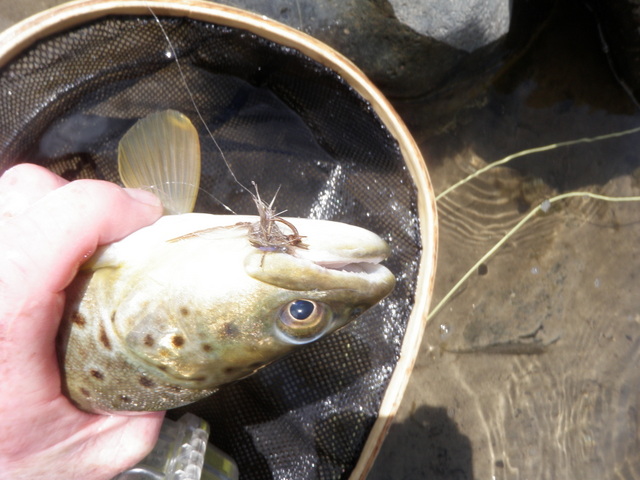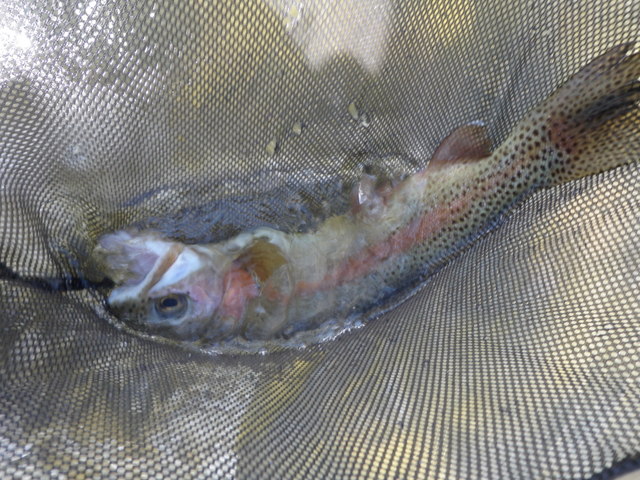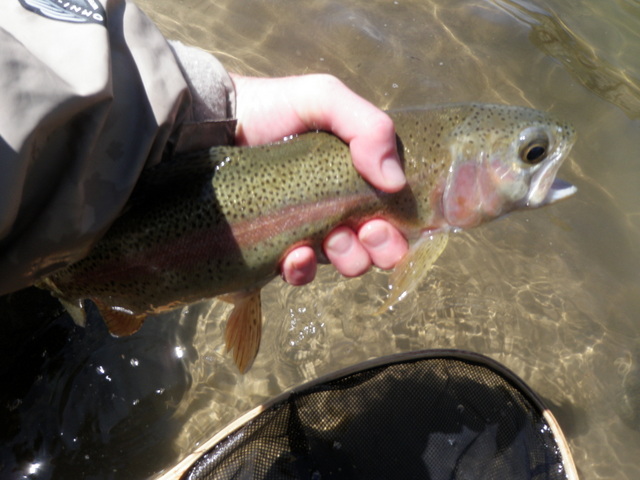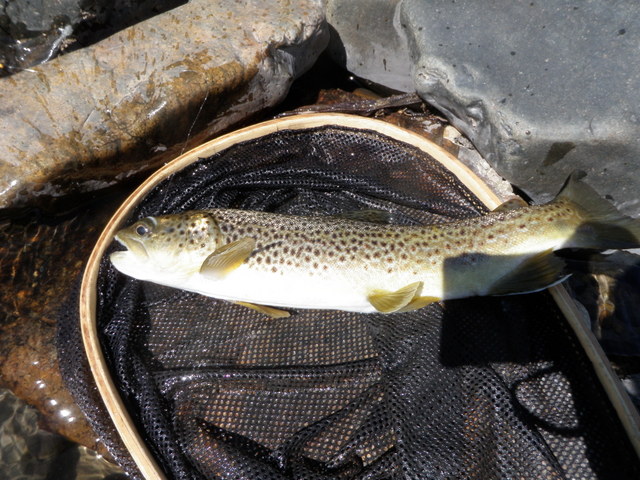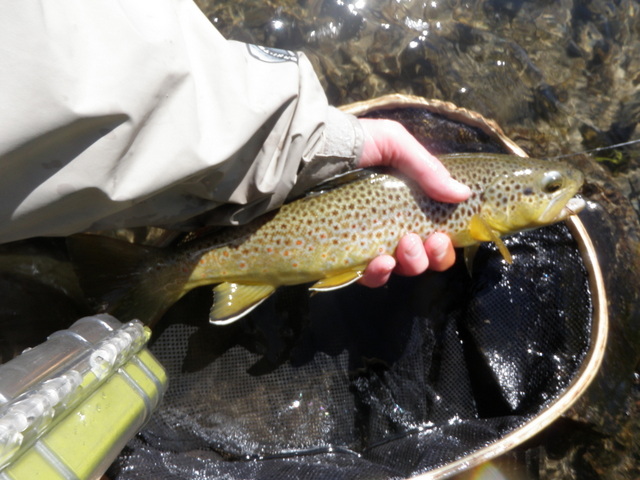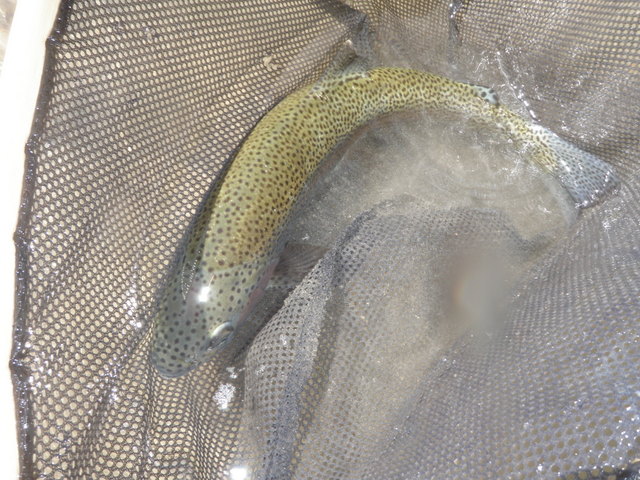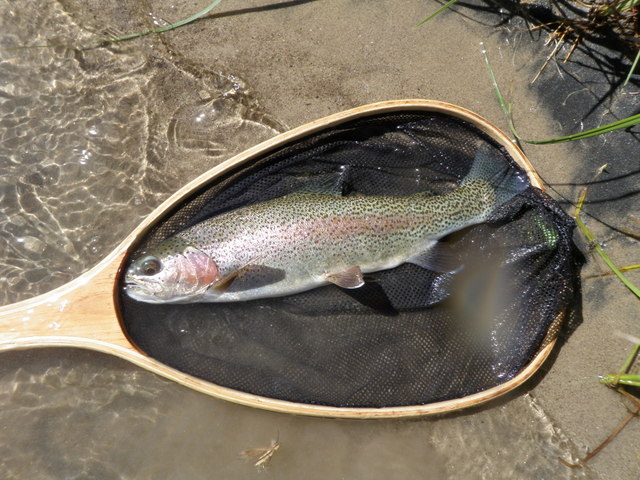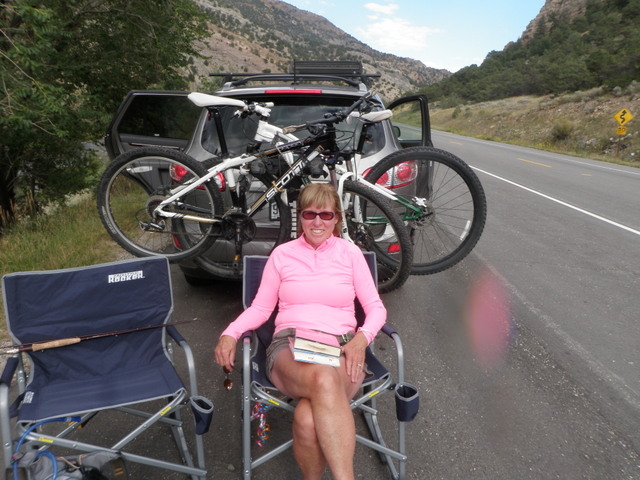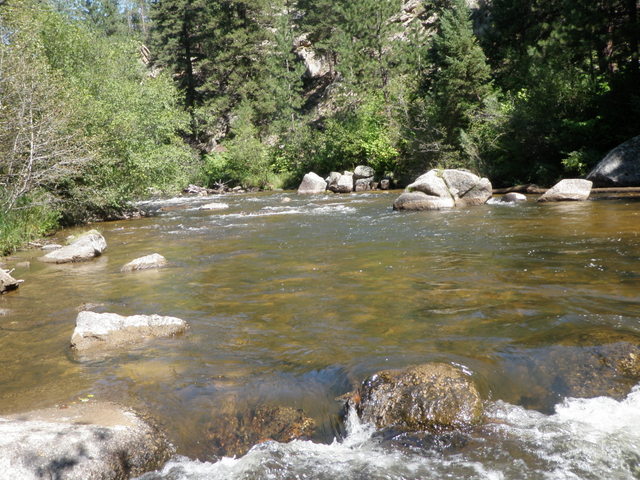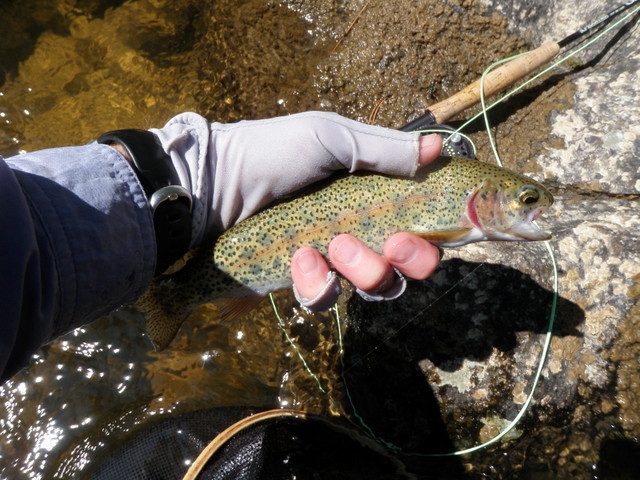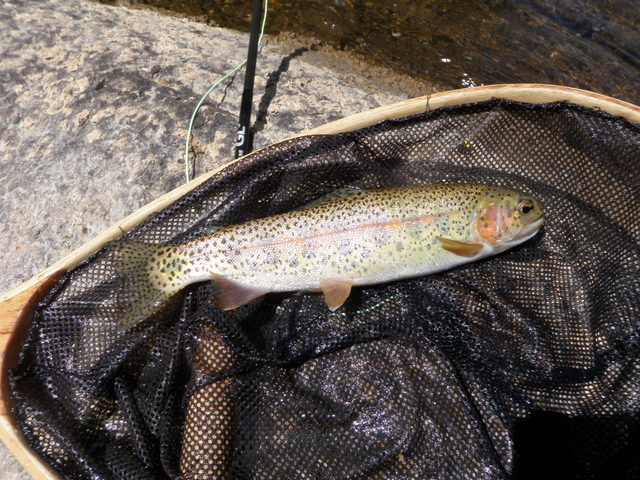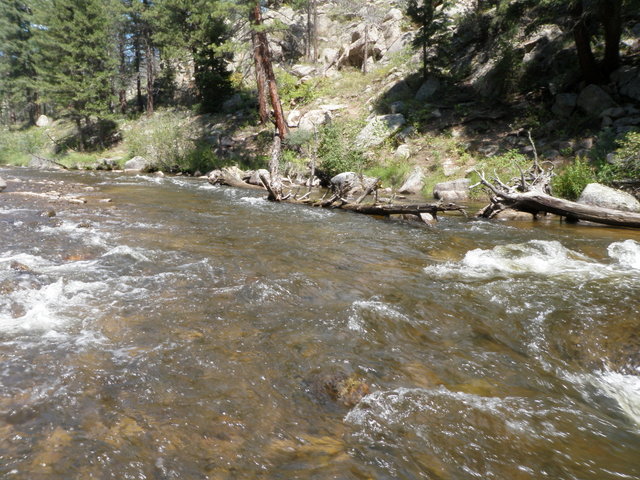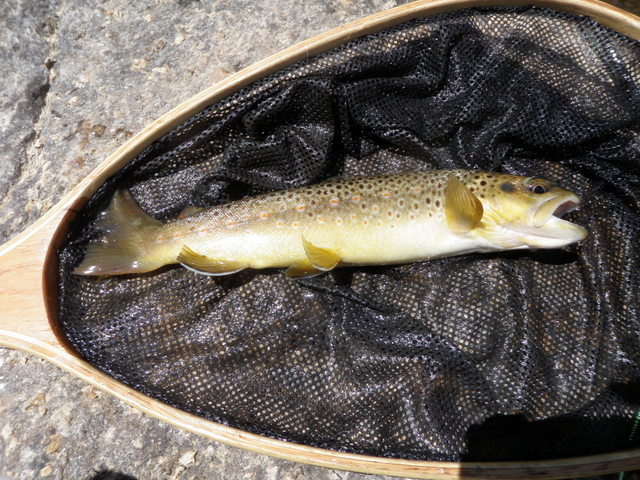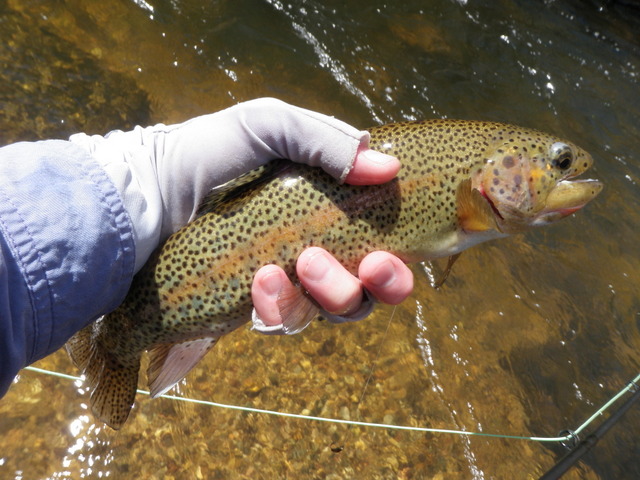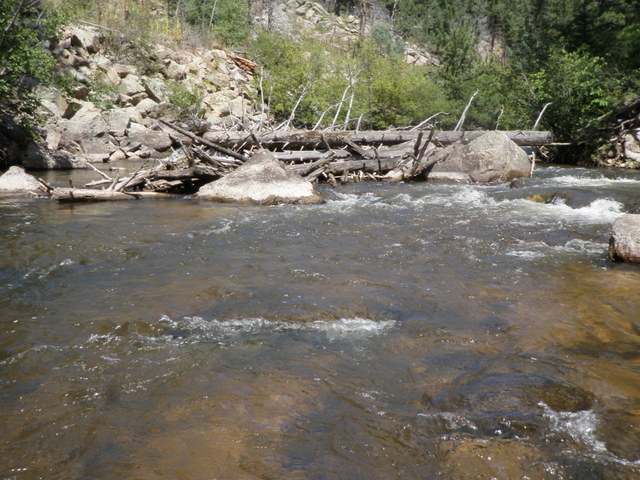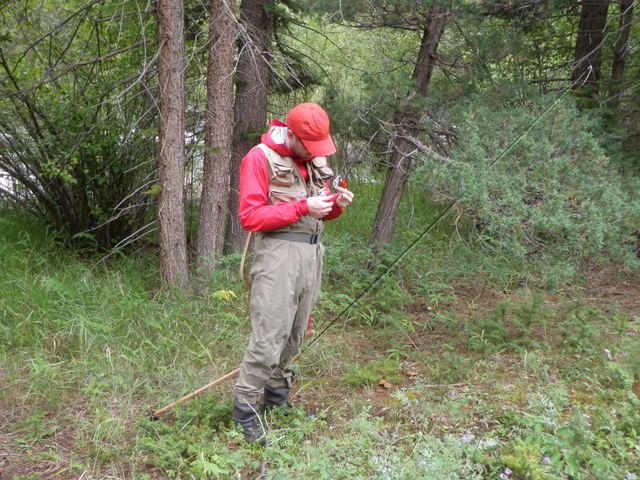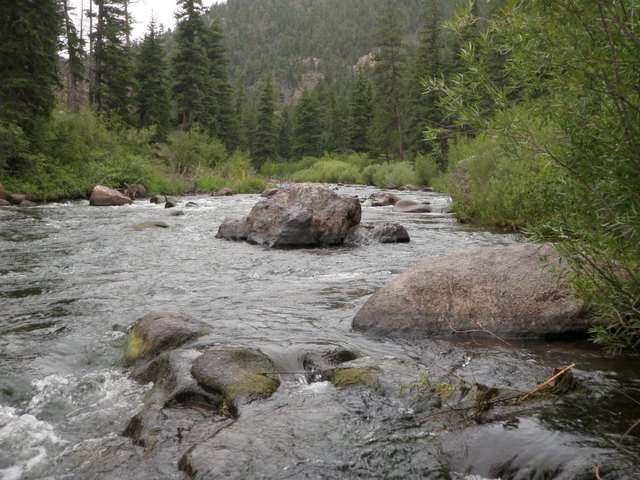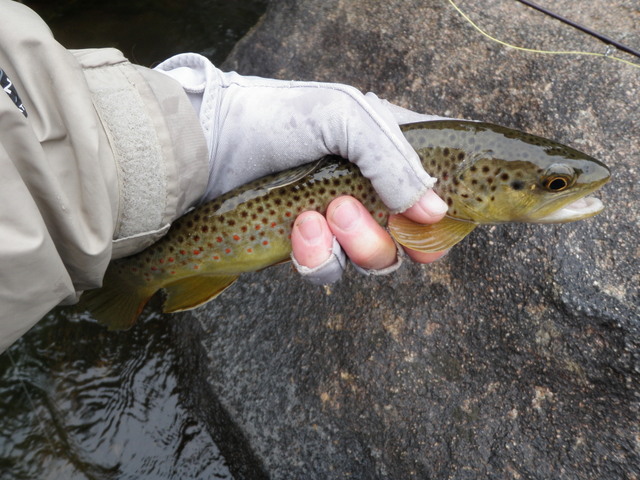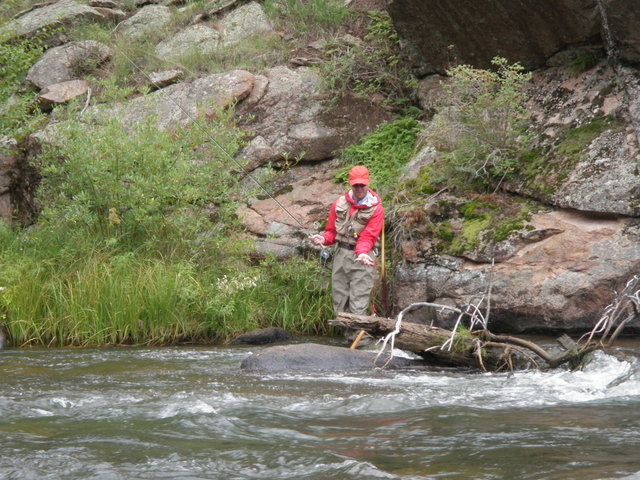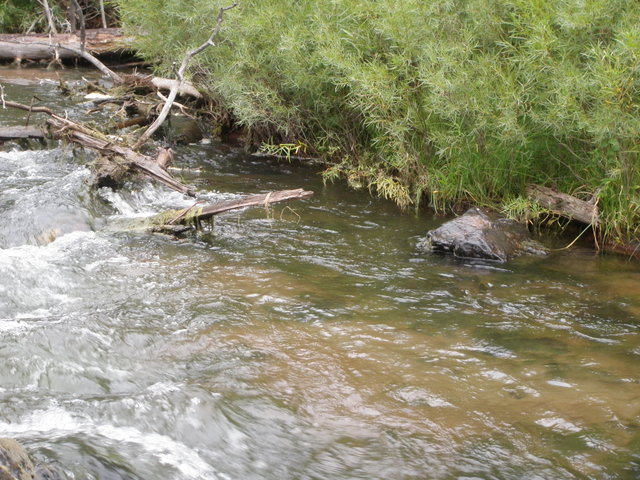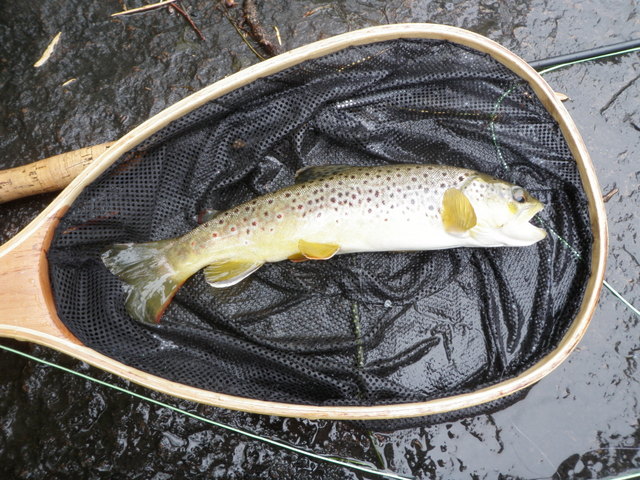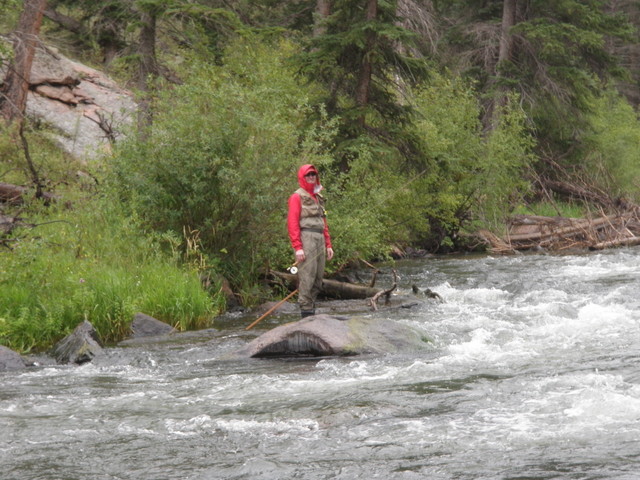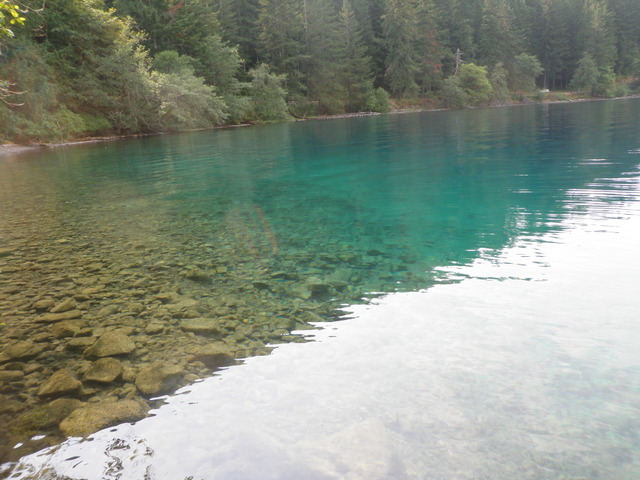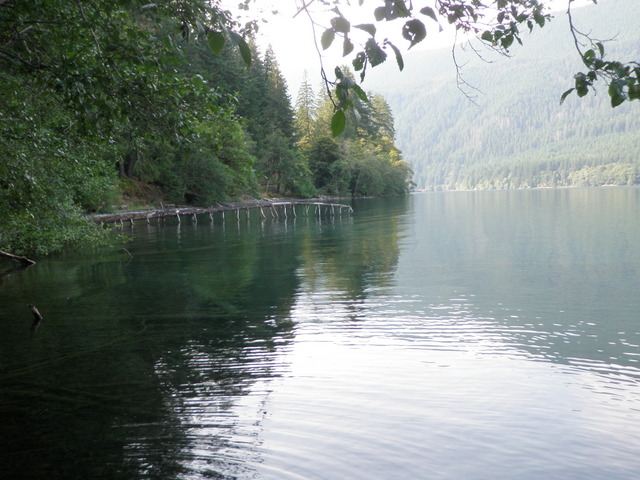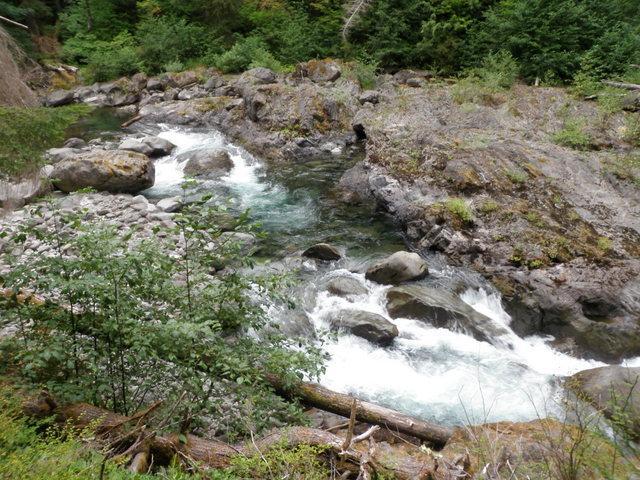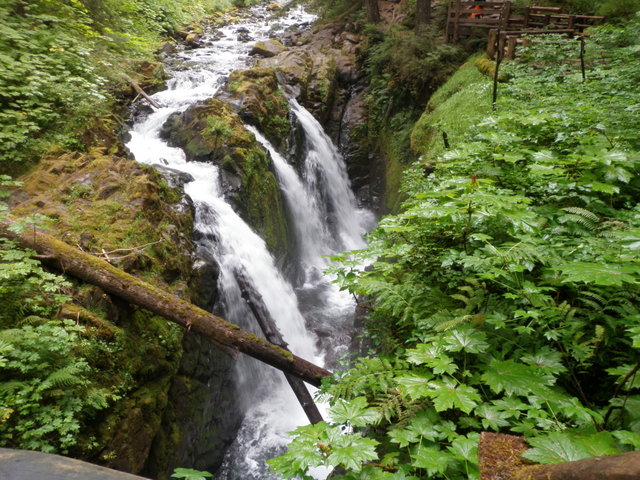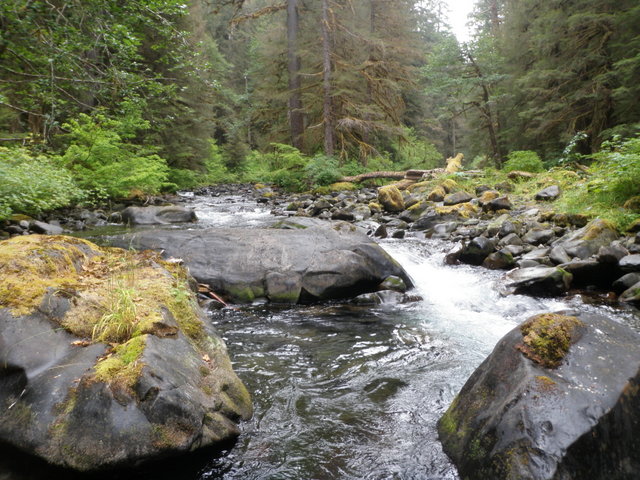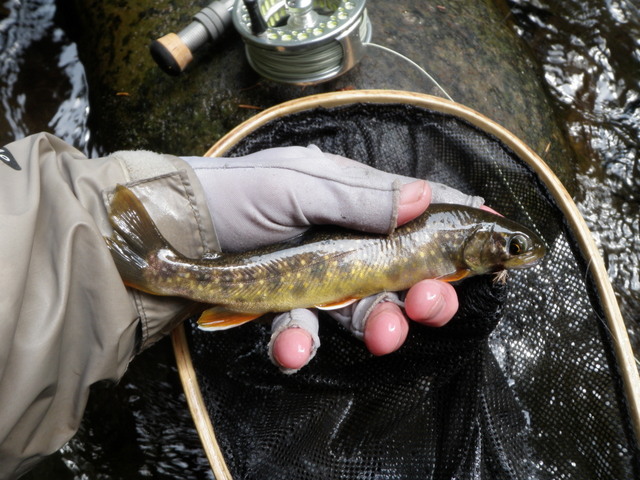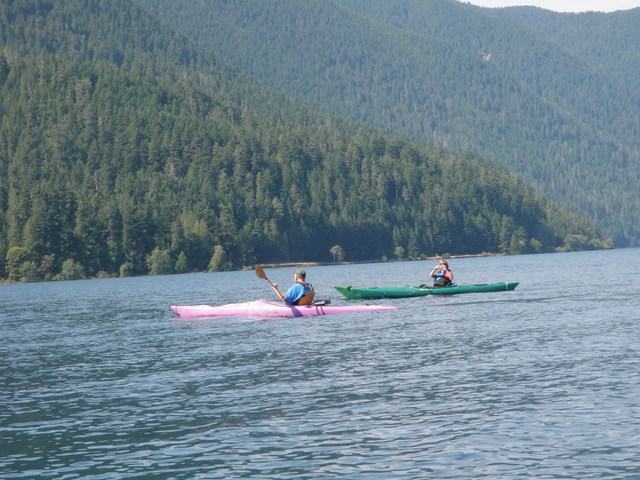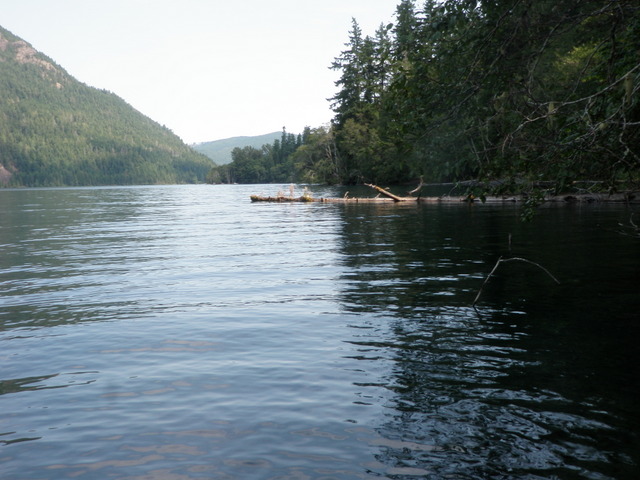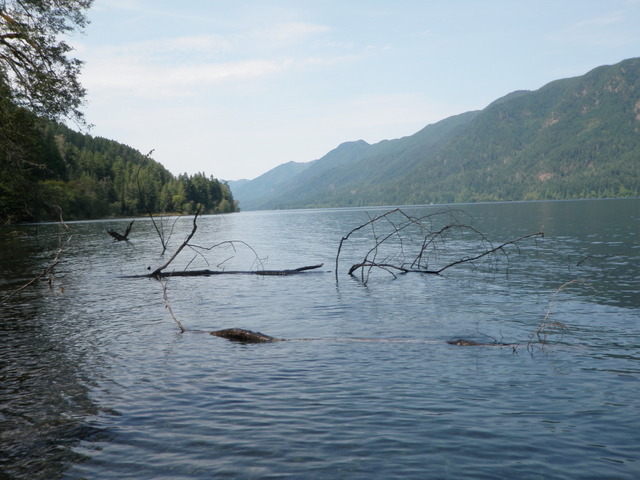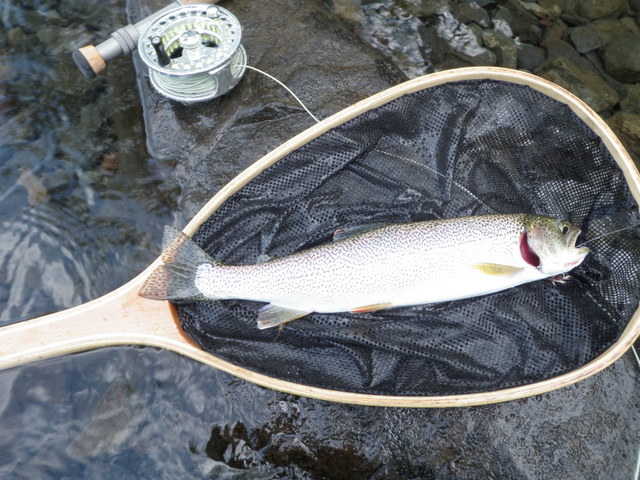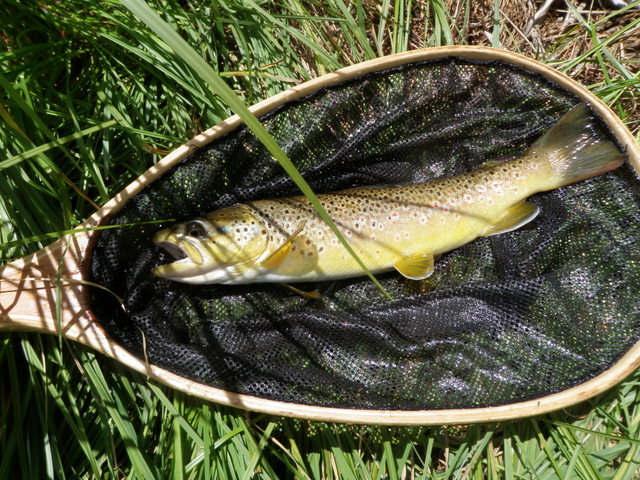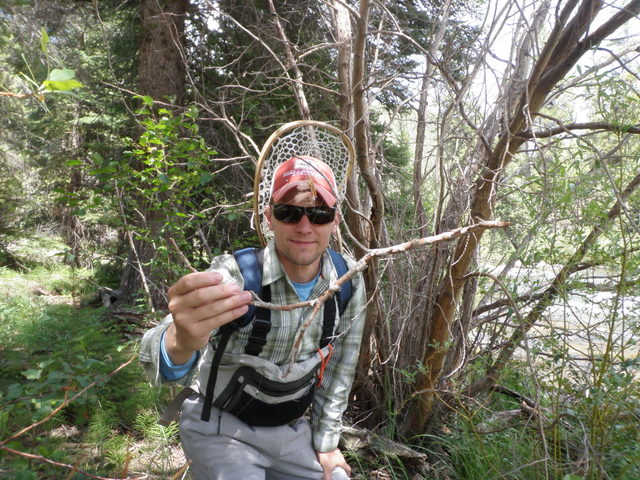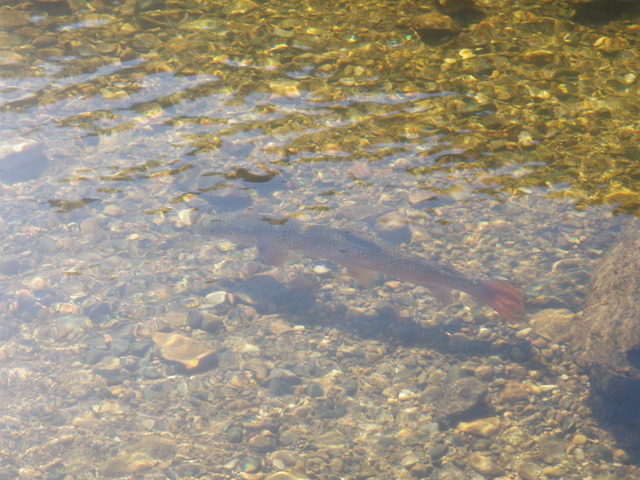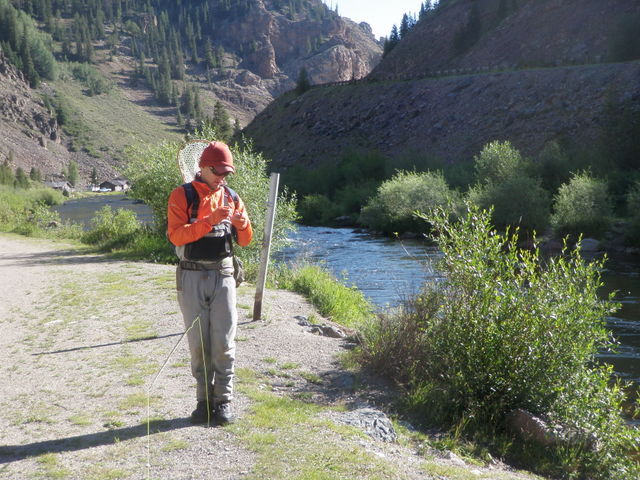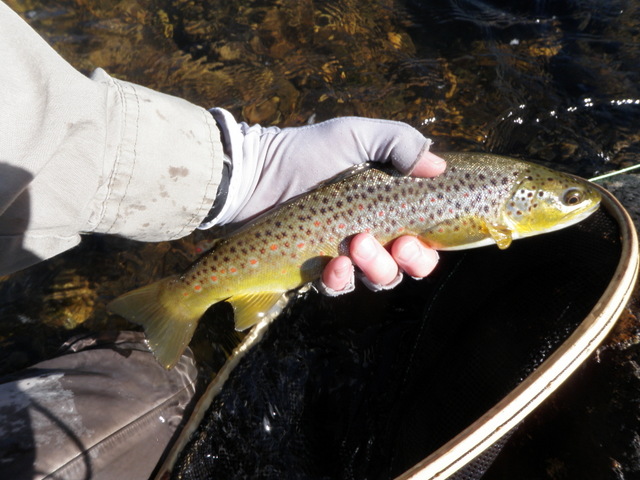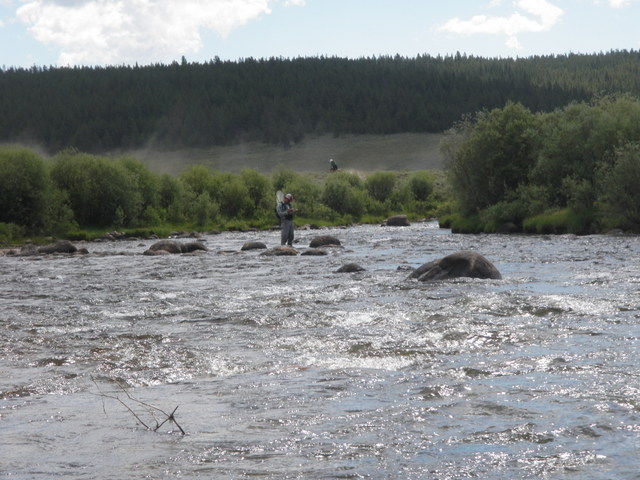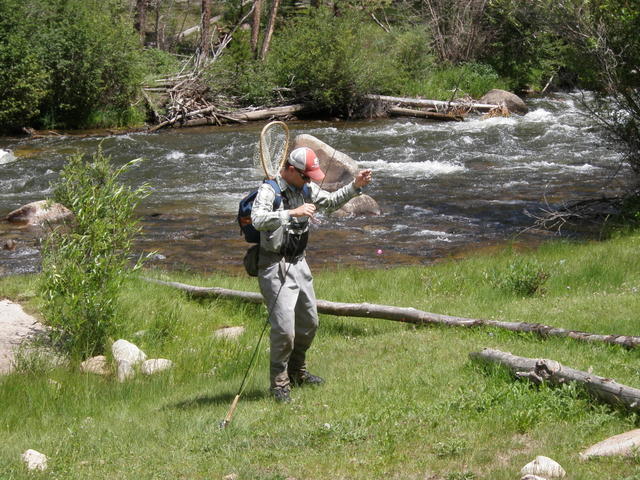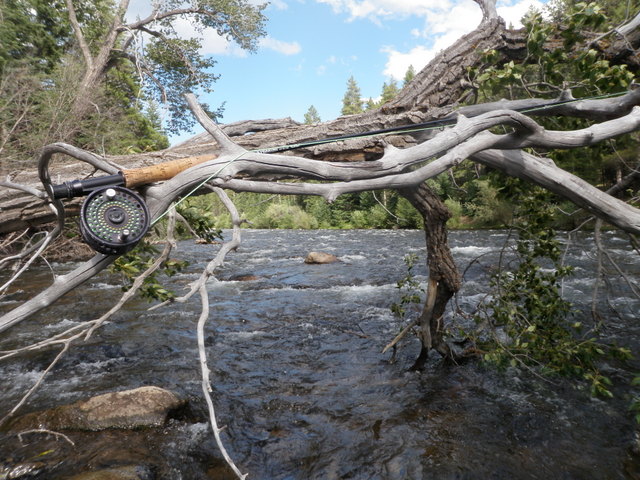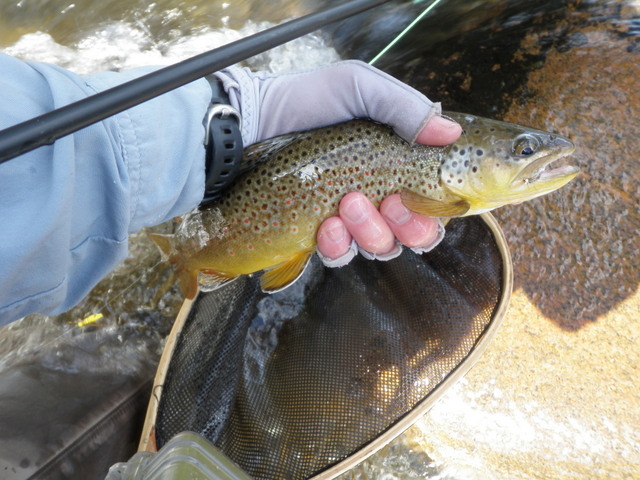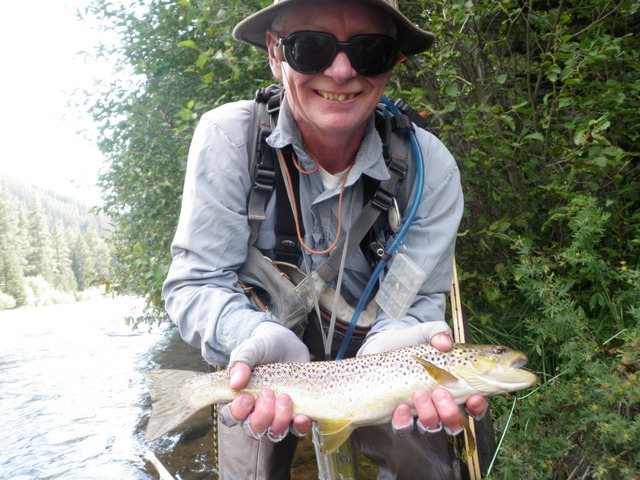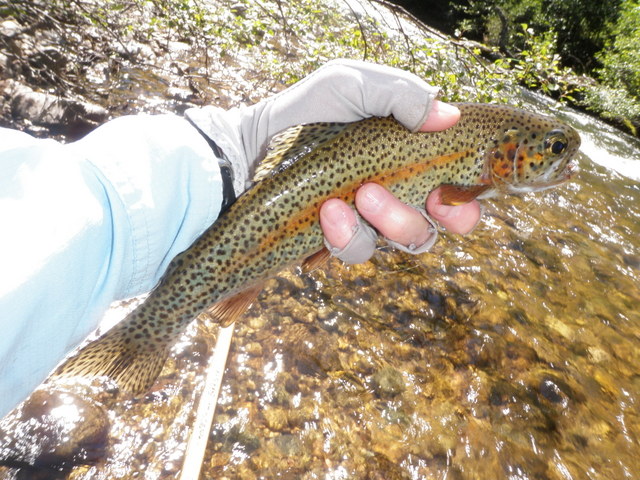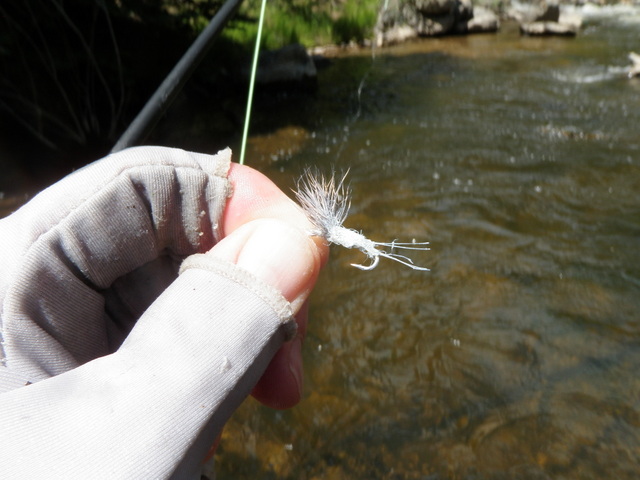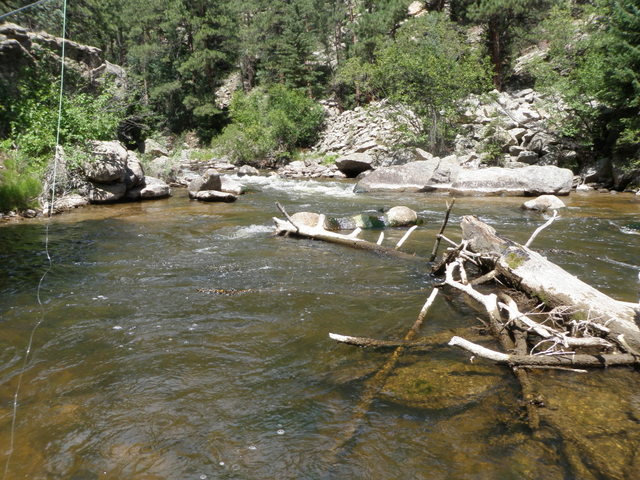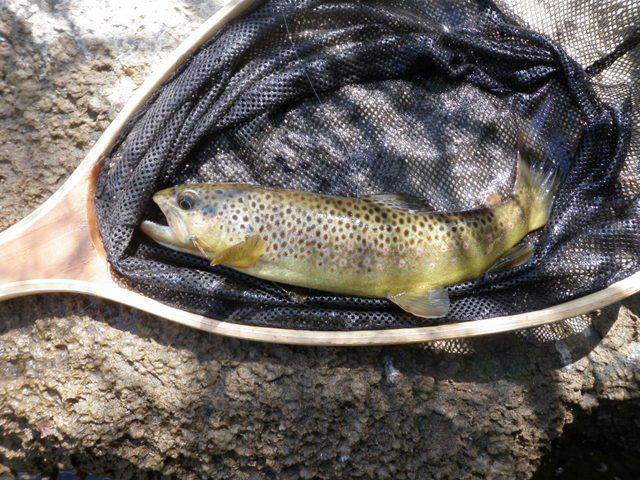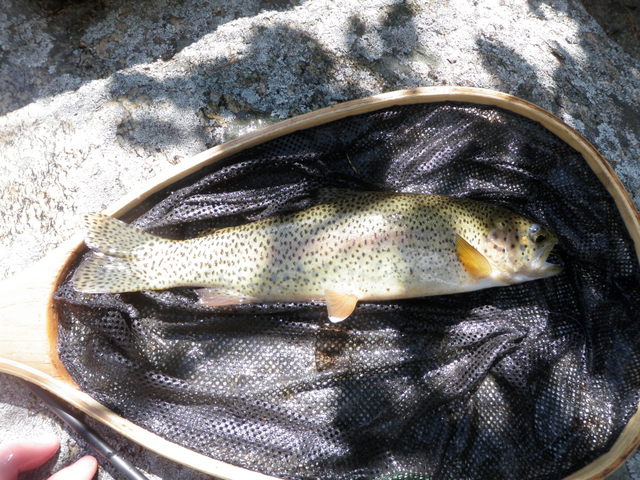Time: 10:00AM – 4:00PM
Location: Chafee – Fremont County line
Fish Landed: 34
Arkansas River 09/05/2014 Photo Album
Over the last four or five years the Arkansas River has grown to become my favorite stream within a day trip of Denver. The quantity and size of fish has improved, and the ratio of rainbow trout has increased, but perhaps the greatest attraction to this large river is the abundant amount of easily accessible public water. Because of the size of the river, I can avoid other fishermen even during popular times such as during the caddis hatch in the pre-runoff period.
Unfortunately for some reason I did not experience any productive days during the early season in 2014. I did visit the river for some solid edge fishing in early July, but even that trip did not deliver the hot fishing I expected. As Labor Day passed, I was anxious to return to my favorite river, and Friday September 5 was the opportunity. Would I be disappointed once again?
Jane loves the Angel of Shavano Campground, and it is situated at the trailhead for climbing Mount Shavano, so we planned a long weekend camping trip to that location. Unfortunately the weather forecast called for a high probability of rain on Thursday, Friday and Saturday so we debated whether we should cancel our plan or forge ahead. We chose the latter course and packed the car and took off by 5PM on Thursday. As we drove southwest on highway 285, we could see dark clouds to the southwest, and sure enough as we reached Poncha Springs and began driving west toward Monarch Pass we encountered light rain.
By the time we reached the campground it was dark and raining lightly, so we quickly found site number 12 along the creek and assembled our tent. It rained most of the night, and when we woke up on Friday morning, it was quite bleak and dreary with mist and fog shrouding the entire narrow valley. The forecast suggested even a higher chance of rain on Friday, so we decided to eat breakfast and pack up everything except the tent.
Jane, being the wonderful wife that she is, dropped me off at the Chaffee – Fremont County line along highway 50 where I gathered all my essentials for a day of fishing. Jane then returned to the campground and completed one of her favorite hikes to the Blanks Cabin along the Colorado Trail on the way to Mount Shavano. When she returned, she earned wife of the year honors as she rolled up the still wet tent and tarp and packed everything into the Santa Fe. She then drove to the pull out where I was dropped off and enjoyed the remainder of her afternoon reading along a busy highway and waiting for me to finish my fishing.
I meanwhile descended the bank at the county line and crossed the river to the opposite shore where I climbed the steep bank to the railroad tracks and walked east until I was quite a distance below the small island that is one of my favorite spots on the entire river. The sky remained quite overcast and the air temperature was in the low 50’s as I began at 10AM. The flows were at 380 cfs, and this level is actually lower than average for September 5 despite a high snow pack and more than average rain during the summer.
The river looked spectacular, as it was crystal clear and low enough to allow coverage of almost any location I wished to explore. I debated which rod to use, but eventually opted for my Sage four piece four weight. I also considered using the thingamabobber nymph set up that I learned from Taylor Edrington, but when I saw the low clear flows, I elected to begin with a dry/dropper rig. I began with a Chernobyl ant trailing a beadhead hares ear and a salvation nymph. This three fly combination has become my preferred choice for beginning my fishing in 2014.
It worked well, and I accumulated seven fish in the first hour while covering some very attractive deep runs and slower moving side pools. When I reached the bottom tip of the small island and worked up along the south side, I added a few more small fish, and these were included in my seven count. I considered converting to something smaller for the small channel that runs along the north side of the island, but my initial flies were performing well, so I stayed with success. Unfortunately the nymphs snagged on rocks in the nice pockets at the bottom of the right channel, and this forced me to disturb the water and spook several decent fish.
I moved to the tail of the nice deep pool at the lower end of the channel and began lobbing the Chernobyl and nymphs, but the fish were having none of them, and I knew that there were plenty of fish present. I decided to switch gears, and I tied on a yellow sally and dropped a beadhead RS2 off the bend. I began to see an occasional blue winged olive fluttering up from the river surface, so I felt the fish might be tuned in to the active BWO nymphs. Unfortunately this theory did not prove out at this point in the day, so I made another change and tied on a parachute hopper with a hares ear body, and below that large fly I added the beadhead hares ear and a soft hackle emerger.
My success rate went through the roof, and I landed twelve more trout as I worked my way up through the right braid around the island. Initially the parachute hopper was drawing refusals, but then I enticed some fish to grab the hares ear, and by the time I reached the top of the island, all three flies were producing. The fish were somewhat smaller than what I experienced on some previous trips to this area, but they were +12 inches on average, and the two that slurped the parachute hopper were quite nice and measured in the 15 inch range.
When I reached the top of the island, I decided to cross the river to fish a very juicy deep run where the river deflects off a large vertical rock wall. Here I landed a gorgeous fifteen inch rainbow in the oxygenated white water at the head of the riffle, and then I followed that with a 14 inch brown that grabbed the hares ear on a downstream drift next to the rock wall. I was at 21 as I glanced at my watch and realized it was approaching 1PM, and I had committed to returning to the drop off point by one o’clock for lunch in case Jane was back from her hike. Since I was near the side of the river that bordered the road, I continued across to the shore and climbed a path to the highway and returned to the county line.
I had my lunch in my backpack, so I found a nice location and perched above the river on a high rock wall and observed the water as I ate. As I gazed at the deep pool below me, I spotted two decent fish, and they were sipping something small from the surface on a fairly regular basis. One fish appeared to be a large rainbow, and it held in a steady position and drifted up occasionally. The other fish tended to move about and covered a twenty foot area from the head of the pool to a spot right below my lunch spot. I could also see that there were very tiny mayflies drifting in the current, so this was probably driving their feeding behavior.
When I finished my lunch I grabbed my rod and decided to make some casts to the deep pool below me. I targeted the rainbow since it was stationary and easier to fish to. I stripped out a bunch of line and began lobbing casts above the fish, and on several drifts it looked at the parachute hopper but scoffed at my offering. Next I began drifting my flies ten feet above the position of the fish, and then when the hopper was just over the fish, I lifted in an effort to imitate an emerging blue winged olive with my trailing soft hackle emerger. Miraculously on the tenth drift and lift, the rainbow reacted and snatched my fly. I now scrambled down a steep path while stretching my arm out to keep pressure on the rainbow, and eventually I maneuvered on to a small beach and brought the fish to my net. It was a very nice seventeen inch rainbow, and I snapped a photo for the archives.
This disturbance scattered the other fish, so I retreated to the car and hiked back along the highway and carefully picked my way back down the path that I used to exit the river for lunch. Once I was at river level I crossed back to the north bank and began working my way upstream along the right bank. The rest of the afternoon was spent prospecting with the three flies to all the likely pockets, runs and pools. Because the water level was low, I was able to explore areas toward the middle of the river, but despite my ability to cover more of the river, the pockets next to the bank were the most productive.
The action in the afternoon was steady but not as frequent as the morning session; however, the slower catch rate was more than offset by the larger size of the fish. After an hour or so I grew weary of continually drying the dubbed body of the parachute hopper, so I replaced it with a tan Charlie Boy hopper. I simply wanted something more buoyant, and I was not catching many fish on the top fly. What a move! Five of the last six fish slurped the foam hopper confidently, and these fish put up spirited battles before sliding into my net. They were all fish in the 13-15 inch range. I covered a lot more water during this time period, but I was rewarded for my persistence and stealth.
By 3:45PM I was in a position across from the county line, and I could see Jane seated in her chair behind the Santa Fe. I continued on upstream for a bit and skipped the long deep pool, and then I prospected some nice pockets. Unfortunately by this time the sun was lower in the sky, and it created a difficult glare on the water, so I decided to call it quits.
Friday September 5 turned out to be my best trip to the Arkansas River in 2014 and perhaps one of my best visits ever. Thirty plus fish in a day is always a positive, but at least ten fish were in the 14 – 15 inch range and 25% were rainbows, and this combination of factors elevated this outing to outstanding. The dry/dropper technique was on fire, and I love fishing using this method. September fishing is typically the best of the year, and it is off to a grand start in 2014.

